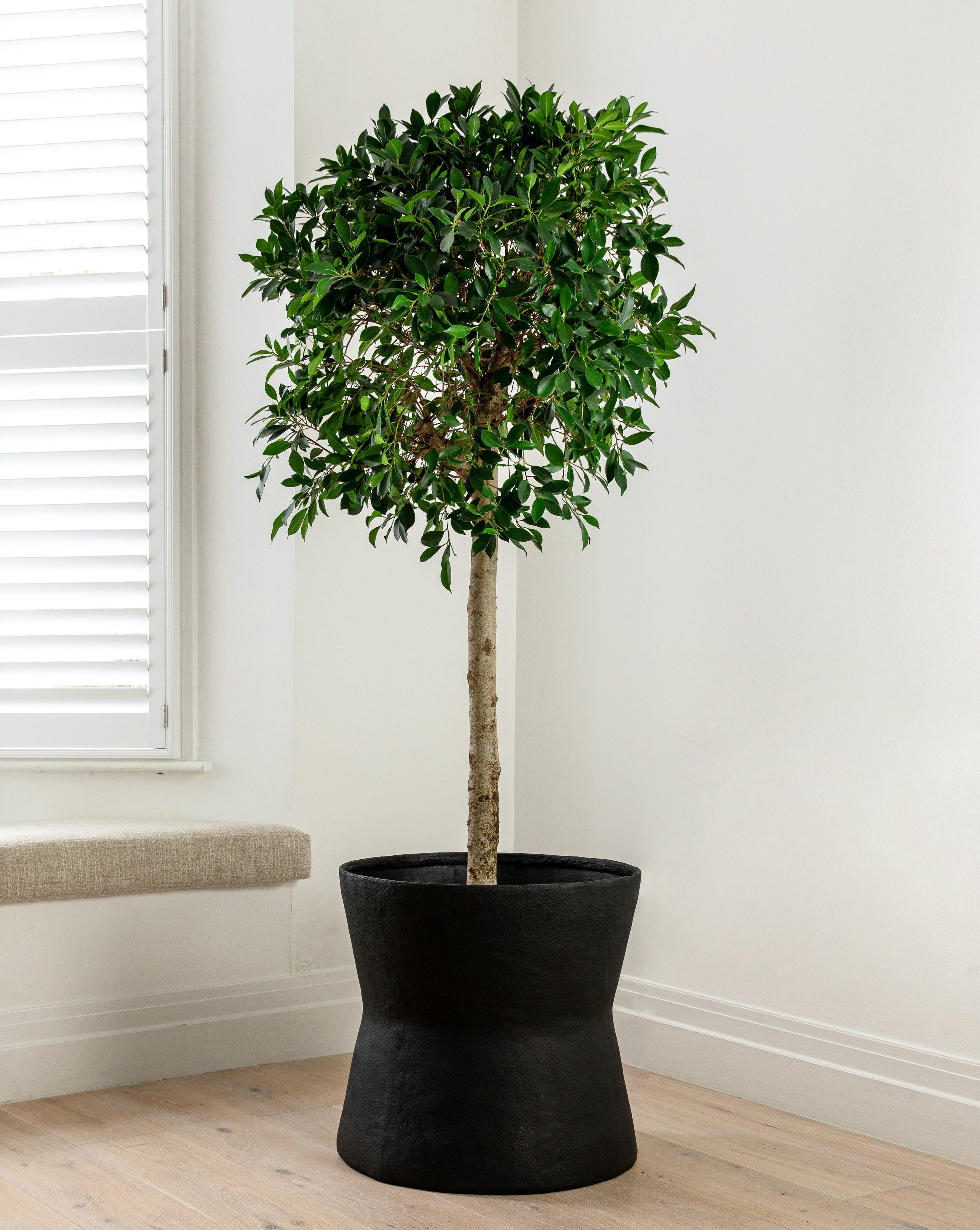Caring for Indian Laurel (Ficus Nitida) involves providing the right balance of light, water, and general maintenance to keep the plant healthy and thriving. Here are the essential tips for taking care of this plant:
1. Light Requirements:
- Bright, indirect sunlight is ideal for Ficus Nitida. While it can tolerate some direct sunlight, especially in the morning, harsh afternoon sunlight might scorch its leaves.
- It can adapt to lower light conditions, but its growth will be slower, and the foliage might thin out over time.
2. Watering:
- Keep the soil moderately moist in the growing months but avoid overwatering. Water the plant thoroughly when the top 1–2 inches (2.5–5 cm) of soil feels dry to the touch.
- Ensure that the plant has good drainage, as soggy soil can lead to root rot.
- In winter, reduce watering slightly, as the plant’s growth will slow down.
3. Soil:
- Use a well-draining potting mix. A mix designed for houseplants or one that contains peat, perlite, and pine bark works well.
- If planting outdoors, ensure that the soil has good drainage, as Ficus Nitida does not tolerate waterlogged soil.
4. Humidity:
- Ficus nitida prefers a humid environment. If the air is dry (especially indoors during winter), increase humidity by misting the leaves or placing a tray of water near the plant.
- Indoors, consider using a humidifier if the air is too dry.
5. Temperature:
- Indian Laurel is sensitive to cold temperatures. Keep it in a room where the temperature stays between 16–24°C.
- Avoid placing it near drafts, air conditioners, or heating vents.
6. Fertilisation:
- During the growing season (spring and summer), feed the plant with a balanced liquid fertiliser once a month.
- Reduce feeding during autumb and winter when the plant’s growth slows.
7. Pruning:
- Regular pruning helps maintain the desired shape and size of the plant. Trim back any leggy or unwanted growth.
- Remove yellowing or dead leaves to maintain plant health and encourage new growth.
8. Repotting:
- Repot the plant every 2–3 years or when it outgrows its container. Choose a pot that is only slightly larger than the current one, as Ficus Nitida likes slightly crowded roots.
9. Pests and Diseases:
- Watch out for common pests like spider mites, mealybugs, scale, and aphids. If pests are present, treat the plant with insecticidal soap or neem oil.
- Keep an eye out for signs of root rot caused by overwatering.





















